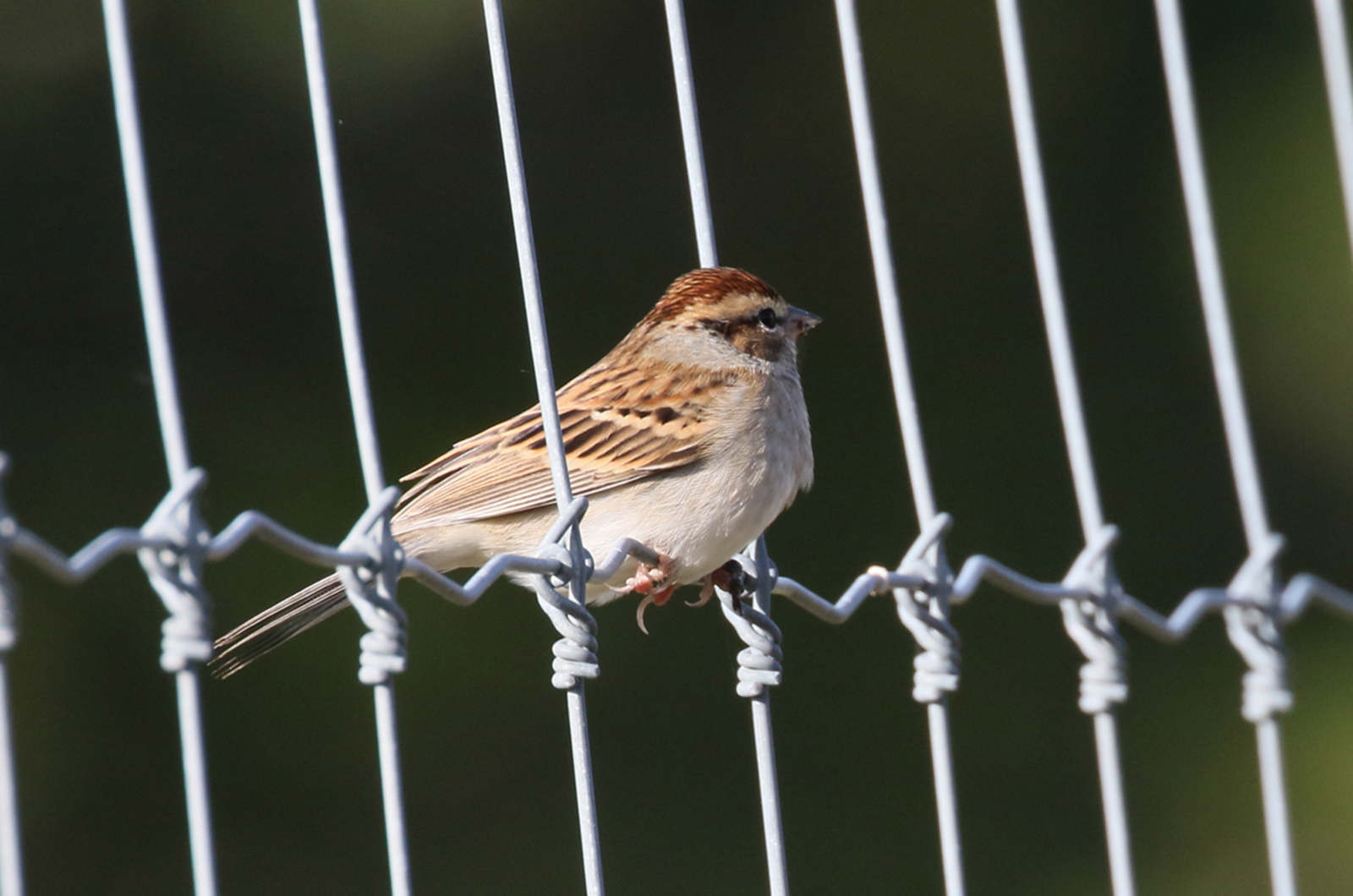Rob Bierregaard has been conducting his annual survey of the productivity of our many osprey nests this week. As there are likely more than 100 active nests, he can not get to all of them himself, so please help out by reporting how many osprey fledglings, or soon to be fledglings, there are in a nest or two wherever you go. You can report them on the MV Bird Alert page on Facebook or email me at the address below and I will forward your reports.
Suddenly, cedar waxwings seem to be more abundant and conspicuous. It is not often that a flock of 19 is reported but that is what David Benvent saw at the Gay Head Cliffs on July 23. He also recorded 11 of them at the same location on July 20.
Other sightings include three seen on the Martha’s Vineyard Bird Club trip to Sheriff’s Meadow Sanctuary on July 17; three sightings from July 22: three found by Ian Boardman at Toad Rock in Aquinnah, two seen by Luanne Johnson at the disc golf course, two seen at Mink Meadows by Seth Buddy; and on July 23 Will Sweet and Mike Perrin found one on Cape Pogue.
The two sightings of larger flocks of waxwings at the Gay Head Cliffs may be foreshadowing the southward songbird migration. In addition to the cedar waxwings, David Benvent also saw 35 house sparrows, 66 house finches, 157 red-winged blackbirds and 48 brown-headed cowbirds. These are larger numbers than we usually see and they were flying around the cliffs area, which is typical behavior for migrants as they prepare to continue on their southward — well, westward from Aquinnah — migration.
The southbound shorebird migration continues this week. David Benvent spotted three red knots on July 18 at Black Point Pond. That same day, Sam Scarfone saw one on Norton Point Beach and nine at Felix Neck on July 21. Other migrating shorebirds seen this week include black-bellied plover, semipalmated plover, ruddy turnstone, sanderling, least sandpiper, semipalmated sandpiper, spotted sandpiper, short-billed dowitcher, greater yellowlegs, western willet and lesser yellowlegs. The observers were Pete Gilmore, Lanny McDowell, David Benvent, Steve Allen, Will Sweet, Mike Perrin, Philip Edmundson, Chris Scott and Sam Scarfone.
Speaking of southbound migrants, it is getting more difficult to identify the small sandpipers currently foraging and resting on our beaches. In July we have only had adults, but on July 22 at Cedar Tree Neck I spotted my first juvenile sandpiper of the season. This semipalmated sandpiper’s plumage was much brighter and fresher, with crisp white borders to the feathers on its back and wings, giving it a rather scaly appearance, in contrasted to the relatively-dull and worn plumage of the molting adults. Nobody said it was easy.
We also have our resident shorebirds, notably killdeer, piping plovers, American oystercatchers, eastern willet, common tern, least tern and black skimmers. The July 17 Martha’s Vineyard Bird Club trip to Sheriff’s Meadow Sanctuary and John Butler’s Mudhole saw an adult killdeer and its three half-grown chicks, confirming that they nest there.
Pete Gilmore and Lanny McDowell observed fledgling Cooper’s hawks on July 23 at Quansoo Farm. They heard unfamiliar calls and soon spotted at least three Cooper’s hawks chasing and harassing each other, “typically spending time near each other, sometimes in the same pine or large oak, then venturing out into the open toward another favorite tree, usually pursued by a sibling. Very exciting.”
This woodlands hawk was also spotted by David Benvent near the old West Tisbury fire station on July 20, Thaw Malin and Cynthia Bloomquist at their West Tisbury home on July 21 and I watched one buzz past me on July 20 at John Butler’s Mudhole.
A few other miscellaneous sightings from this week. Pete Gilmore found a black-billed cuckoo near Black Point Pond on July 23. David Benvent spotted a red-breasted merganser from Lobsterville Beach and two ravens and an orchard oriole at the Gay Head Cliffs on July 20. The next day he spotted a saltmarsh sparrow at Norton Point. From the state forest, Richard Couse heard a whip-poor-will and a screech owl on July 21, and the next day he saw a scarlet tanager. Bob Shriber spotted another scarlet tanager on July 20 along Old South Road in Aquinnah.
Here is a really quick look at the abundance of the six species of sparrows – often referred to as little brown jobs — that nest on the Island. The most abundant is the song sparrow, which lives everywhere on the Island; there were 75 different locations where song sparrows were reported on the website eBird in the first three weeks of July. The other sparrow with streaking on its breast is the savannah sparrow, which is a grassland specialist living in dunes and on large agricultural fields. It has been reported 10 times so far in July.
A second grouping of sparrows has a rusty reddish cap atop their heads. The most abundant of these is the chipping sparrow, seen in 36 different locations across the Island in July. It lives in open woodlands and tree-lined backyards. Field sparrows also have rusty caps and live in open habitats with plenty of low perches; they have been recorded at six locales, four of which are within the state forest.
The fifth species is the saltmarsh sparrow. Suffice it to say that its name tells us where they live. There have been sightings in only three locales but they are more widespread than that. Another habitat-restricted sparrow is the grasshopper sparrow, which lives in grasslands, pastures and other agricultural settings. We have not seen that species yet this year.
Please email your sightings to birds@vineyardgazette.com.
Robert Culbert is an ecological consultant with Nature Watch LLC living in Vineyard Haven.








Comments
Comment policy »